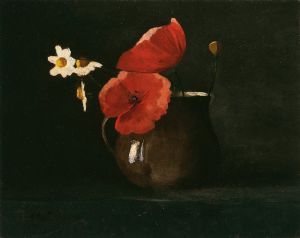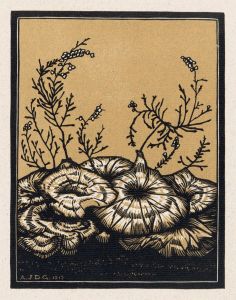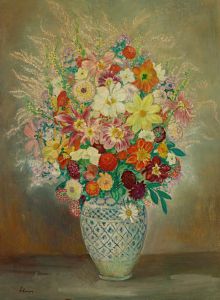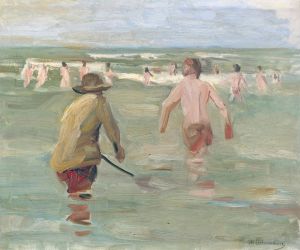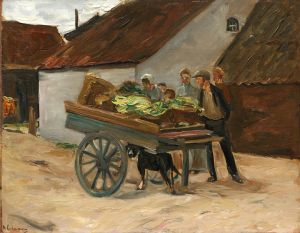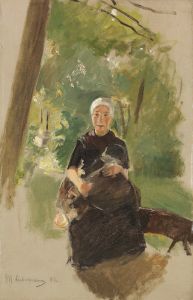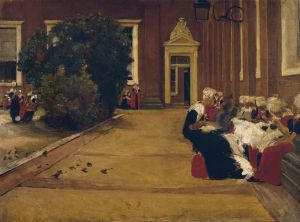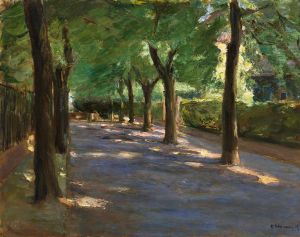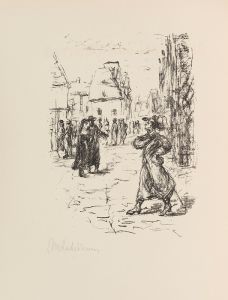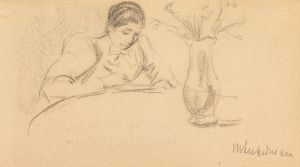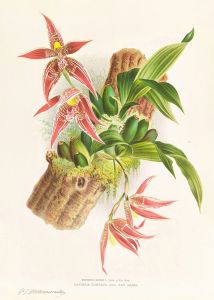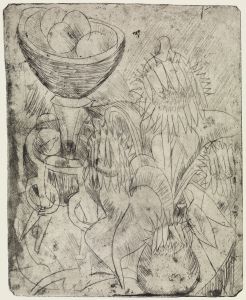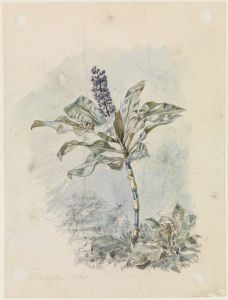
Die Blumenterrasse im Wannseegarten nach Nordwesten
A hand-painted replica of Max Liebermann’s masterpiece Die Blumenterrasse im Wannseegarten nach Nordwesten, meticulously crafted by professional artists to capture the true essence of the original. Each piece is created with museum-quality canvas and rare mineral pigments, carefully painted by experienced artists with delicate brushstrokes and rich, layered colors to perfectly recreate the texture of the original artwork. Unlike machine-printed reproductions, this hand-painted version brings the painting to life, infused with the artist’s emotions and skill in every stroke. Whether for personal collection or home decoration, it instantly elevates the artistic atmosphere of any space.
"Die Blumenterrasse im Wannseegarten nach Nordwesten" is a painting by the renowned German artist Max Liebermann, created in 1915. Liebermann was a leading figure in the German Impressionist movement and is celebrated for his depictions of domestic and garden scenes, which often reflect a serene and contemplative atmosphere. This particular work is a quintessential example of his mature style, characterized by loose brushwork and a vibrant palette.
The painting portrays a view of the flower terrace in the garden of Liebermann's summer residence at Wannsee, a picturesque area near Berlin. The garden at Wannsee was a significant source of inspiration for Liebermann, and he produced numerous works capturing its beauty throughout different seasons and times of day. The terrace, with its lush array of flowers, serves as the focal point of the composition, leading the viewer's eye into the tranquil garden setting.
Liebermann's use of light and color in "Die Blumenterrasse im Wannseegarten nach Nordwesten" exemplifies his Impressionist approach. The interplay of sunlight and shadow across the terrace and the surrounding foliage is rendered with a deft touch, creating a sense of immediacy and presence. The painting captures the essence of a peaceful summer day, inviting viewers to immerse themselves in the quietude and natural beauty of the scene.
The Wannsee garden itself holds historical significance, as it was not only a personal retreat for Liebermann but also a place where he entertained fellow artists, intellectuals, and cultural figures of his time. The garden became a symbol of Liebermann's artistic vision and his connection to nature, which was a central theme in his work.
Max Liebermann's contributions to art extend beyond his paintings; he was also an influential figure in the German art world, serving as the president of the Berlin Secession, an association of artists who advocated for modern art in Germany. His leadership and advocacy played a crucial role in shaping the direction of German art during the late 19th and early 20th centuries.
"Die Blumenterrasse im Wannseegarten nach Nordwesten" is housed in the collection of the Max Liebermann Villa at Wannsee, which has been transformed into a museum dedicated to the artist's life and work. The villa and its gardens have been meticulously restored to reflect their appearance during Liebermann's lifetime, offering visitors a glimpse into the environment that inspired many of his masterpieces.
In summary, "Die Blumenterrasse im Wannseegarten nach Nordwesten" is a testament to Max Liebermann's skill as an Impressionist painter and his deep appreciation for the natural world. The painting not only captures the beauty of the Wannsee garden but also reflects the broader cultural and historical context of Liebermann's life and work. Through this piece, viewers can appreciate the harmonious blend of art and nature that defined Liebermann's artistic legacy.





